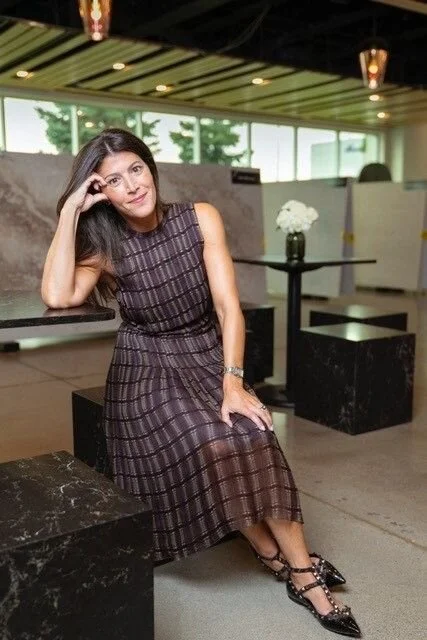FORWARD is a global fellowship program for emerging design leaders developed by Steelcase and Savannah College of Art and Design.
Telnyx - A workplace for talent acquistion and retention
start-up companies often buy bare bones furniture “to impress their investors that they’re doing things economically. I think that’s penny wise and pound foolish. If you amortize the cost over five years, you make all your money back and more, when you take into account the total cost of your most expensive resource, your people.”
This is Why Outdoor Office Spaces Support Success
To combat disengagement and fatigue, consider working outside. Even in the fall, providing a way for employees to spend time outside can boost wellbeing while transitioning from summer bliss to winter cold.
Watch: +Positive Spaces | Philips
Interface's modular flooring served as a basis for the design of the new open office concept of Philips.
Increase productivity at work: just add air, sunlight, and water
Workplace Design Is Changing, Part 1: It’s All About Employee Convenience
While one-size-fits-all has ruled office design in recent years, this trend is dissolving and is being replaced with a much more flexible approach to the workplace.
Watch: Steelcase Demonstrates the Smart and Connected Workplace with New IoT-Powered Solutions
Steelcase Workplace Advisor can deliver advanced analytics around the clock, making it possible to receive real-time statistics alongside enterprise reliability and security. Steelcase then takes this information and layers their own expertise on top of it, giving organizations the ability to see exactly how their spaces are being used.
How much emotion is too much emotion at work?
Brad Lande-Shannon, Live Grey’s CEO, believes that one of most fundamental ways to build a work culture is to foster trust and connection among colleagues.
Workplace design continues to lag behind the needs of modern working life
Companies around the world waste potentially billions of dollars on under-utilised office spaces that are unfit for purpose and do not reflect the needs of modern workers, a recent benchmark study of over 100 workplaces claims.
Race for talent drives office designs
State-of-the-art offices also blur the boundaries between work, life, and play, says Lise Newman, AIA, Director of SmithGroupJJR’s Workplace Practice.
Renewing the Purpose of Wellness
Multiple studies examining the larger impact that small environmental changes have on humans highlight the growing benefits of biophilia in the workplace.
A Healthy Return: The Business Case for Wellbeing in the Workplace – Part 3
In the third installment of a 4-part event series, Haworth hosts a Q&A with an expert panel on designing offices that support today’s workers.
MASS Design Group
Living Office helped MASS Design Group create a workplace that reflects their purpose—to advocate for architecture that promotes dignity.
No, We Won’t All Be Freelancers In The Future Of Work
d.confestival: The Future of Design Thinking
International innovators and research experts gathered in Germany to explore the importance of place to design thinking.
Why “The Troubled Future of Remote Working” Predictions Are Always Wrong
While we occasionally hear about companies abandoning their remote work programs (and almost all of those companies have larger, underlying problems they’re trying to fix), the long-term trend shows that many more companies are allowing many more employees to work remotely to some extent.
In a world of constant change, tech companies seek permanence on campus
If tech was ever a niche, those days are long gone. It permeates every facet of our life. No wonder that in return, its workplaces increasingly are reshaping the landscapes around us.
How to harness AI to improve workplace efficiency
Harnessing artificial intelligence in the workplace is the best way to improve overall efficiency, for both employees and employers.
Listen: The Healing Office and workplace productivity
Stress and sick leave cause problems within the workplace not only for the employers, but for the employees as well. But can a ‘healing office’ increase productivity?
An environmental psychology perspective on workplace design
At the most basic level the workplace should offer shelter, sanitation (good toilets) and nutrition (coffee and places to eat). We then need the tools, equipment (technology and furniture) and facilities (meeting rooms) to complete the task in hand.

























